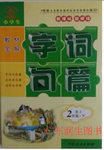题目内容
This used car is ________ more than 500 dollars.
- A.worth
- B.cost
- C.spent
- D.paid

 教材全解字词句篇系列答案
教材全解字词句篇系列答案I passed all the other courses that I took at my university, but I could have never passed botany. This was because all botany students had to spend several hours a week in a laboratory looking through a microscope at plant cells, and I could never once see a cell through a microscope. This used to make my professor angry. He would wander around the laboratory pleased with the progress all the students were making in drawing the structure of flower cells, until he came to me. I would just be standing there. “I can’t see anything,”I would say. He would begin patiently enough, explaining how anybody can see through a microscope, but he would always end up angrily, claiming that I could too see through a microscope but just pretended that I couldn’t. “It takes away from the beauty of flowers anyway.”I used to tell him.“We are not concerned with beauty in this course,”he would say.“We are concerned with the structure of flowers.” “Well,” I’d say.“I can’t see anything.” “Try it just once again,” he’d say, and I would put my eye to the microscope and see nothing at all, except now and again something unclear and milky. “You were supposed to see a clear, moving plant cells shaped like clocks.” “I see what looks like a lot of milk.” I would tell him. This, he claimed, was the result of my not having adjusted the microscope properly, so he would readjust it for me, or rather, for himself. And I would look again and see milk.
I failed to pass botany that year, and had to wait a year and try again, or I couldn’t graduate. The next term the same professor was eager to explain cell-structure again to his classes. “Well,”he said to me, happily, “we’re going to see cells this time, aren’t we?” “Yes,sir,” I said. Students to the right of me and to the left of me and in front of me were seeing cells; what’s more, they were . Of course, I didn’t see anything.
So the professor and I tried with every adjustment of the microscope known to man. With only once did I see anything but blackness or the familiar milk, and that time I saw, to my pleasure and amazement, something like stars. These I hurriedly drew. The professor, noting my activity, came to me, a smile on his lips and his eyebrows high in hope. He looked at my cell drawing. “What’s that?”he asked.“That’s what I saw,”I said.“You didn’t, you didn’t, you didn’t!”he screamed, losing control of himself immediately, and he bent over and looked into the microscope. He raised his head suddenly. “That’s your eye!”he shouted.“You’ve adjusted the microscope so that it reflects!You’re drawn your eye!”
【小题1】Why couldn’t the writer see the flower cells through the microscope? .
| A.Because he had poor eyesight |
| B.Because the microscope didn’t work properly |
| C.Because he was not able to adjust the microscope properly |
| D.Because he was just playing jokes on his professor by pretending not to have seen it |
| A.His professor expected him to have seen the cells and drawn the picture of them |
| B.His professor hoped he could perform his task with attention |
| C.His professor wished him to learn how to draw pictures |
| D.His professor looked forward to seeing all his students finish their drawings |
| A.Real stars | B.His own eye |
| C.Something unknown | D.Milk |
| A.Realistic | B.Romantic | C.Serious | D.Humorous |
Do you know ________
|
A.what is this used for |
B.what this is used for |
|
C.which this is used |
D.that this is used for |